kPa to PSI Converter, you need to use the conversion factor between these two units of pressure:
1 kPa = 0.145037737797 PSI
- PSI to Kilopascal Converter
- Bar to PSI Converter
- PSI to Bar Converter
- kPa to Bar Converter
- Bar to kPa Converter
- Pa to PSI Converter
- PSI to Pa Converter
Conversion Formula
To convert a pressure value from kPa to PSI, use the following formula:
PSI=kPa×0.145037737797PSI=kPa×0.145037737797
Example Conversion
Let’s say you want to convert 200 kPa to PSI:
200 kPa×0.145037737797=29.0075475594 PSI200 kPa×0.145037737797=29.0075475594 PSI
Manual Conversion Steps
- Identify the value in kPa: For instance, 200 kPa.
- Multiply by the conversion factor: 200 kPa ×× 0.145037737797 = 29.0075475594 PSI.
- Round the result: Often, it’s practical to round the result to a reasonable number of decimal places, such as 29.01 PSI.
Practical Application
Here are some examples of how this conversion might be used:
- Tire Pressure: If a car’s tire pressure is specified as 220 kPa, you can convert this to PSI to understand the value commonly used in the United States.
- Engineering Applications: Many industrial and mechanical systems specify pressure in PSI, so converting from kPa to PSI is essential for international work.
- Medical Equipment: Blood pressure readings and other medical devices often use PSI in certain regions.
Table for Quick Reference
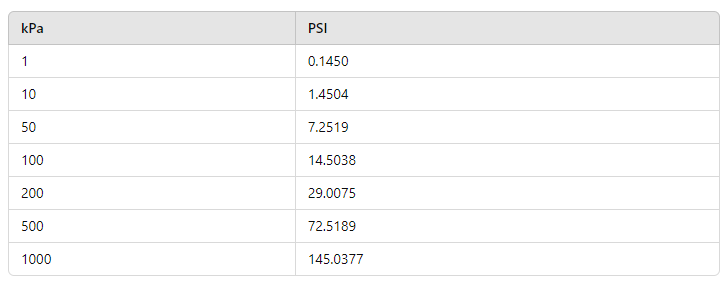
Definition of kPa (Kilopascal)
Kilopascal (kPa) is a unit of pressure in the International System of Units (SI). It is derived from the pascal (Pa), which is the SI base unit of pressure.
1 kilopascal (kPa) is equal to 1,000 pascals (Pa).
Key Points:
- Unit Symbol: kPa
- Base Unit: Pascal (Pa)
- Conversion: 1 kPa = 1,000 Pa
Understanding Pressure and the Pascal
Pressure is defined as the force applied perpendicular to the surface of an object per unit area over which that force is distributed.
Pascal (Pa) is the SI unit of pressure and is defined as one newton per square meter (N/m²). Since the pascal is a relatively small unit, it is often more practical to use kilopascals for everyday pressure measurements.
Contextual Uses:
- Meteorology: Atmospheric pressure is commonly measured in kilopascals. Standard atmospheric pressure at sea level is approximately 101.325 Kilopascals.
- Engineering and Industry: Various engineering applications, including the pressure of gases and liquids in systems like tires, hydraulics, and pneumatics, are often measured in kilopascals.
- Medical Field: Blood pressure measurements are sometimes expressed in Kilopascals, though mmHg (millimeters of mercury) is more common.
Example Calculation:
If a pressure gauge reads 500 Kilopascals, it means the pressure is 500,000 pascals (since 1 Kilopascal = 1,000 Pa).
Visual Representation:
- 1 Kilopascal = 1,000 Pa
- 10 Kilopascal = 10,000 Pa
- 100 Kilopascals = 100,000 Pa
Comparison with Other Units:
- 1 kPa ≈ 0.01 bar
- 1 kPa ≈ 0.145 psi (pounds per square inch)
- 1 atmosphere (atm) ≈ 101.325 kPa
By understanding the kilopascal and its relationship to the pascal and other units of pressure, you can effectively measure and communicate pressure values in various scientific and practical contexts.
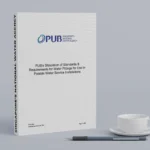
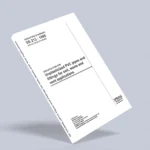





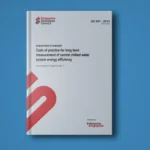
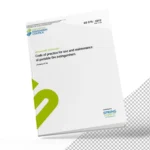
4 thoughts on “kPa to PSI Converter”